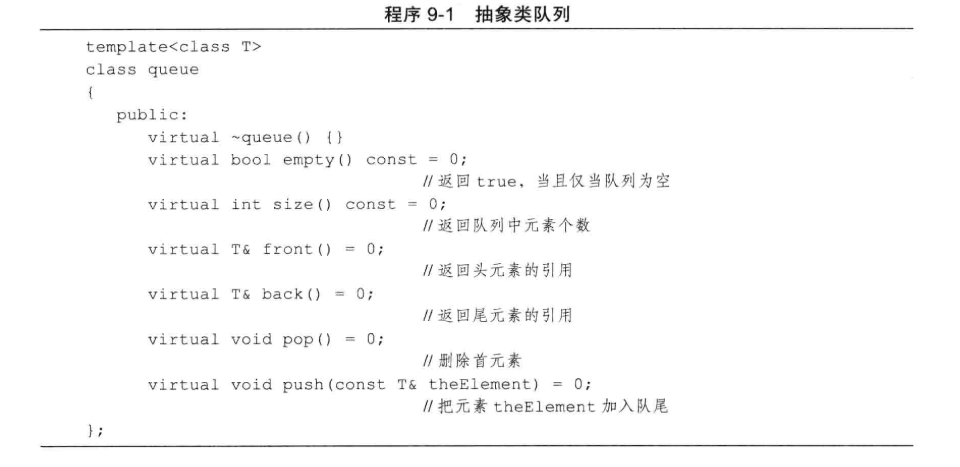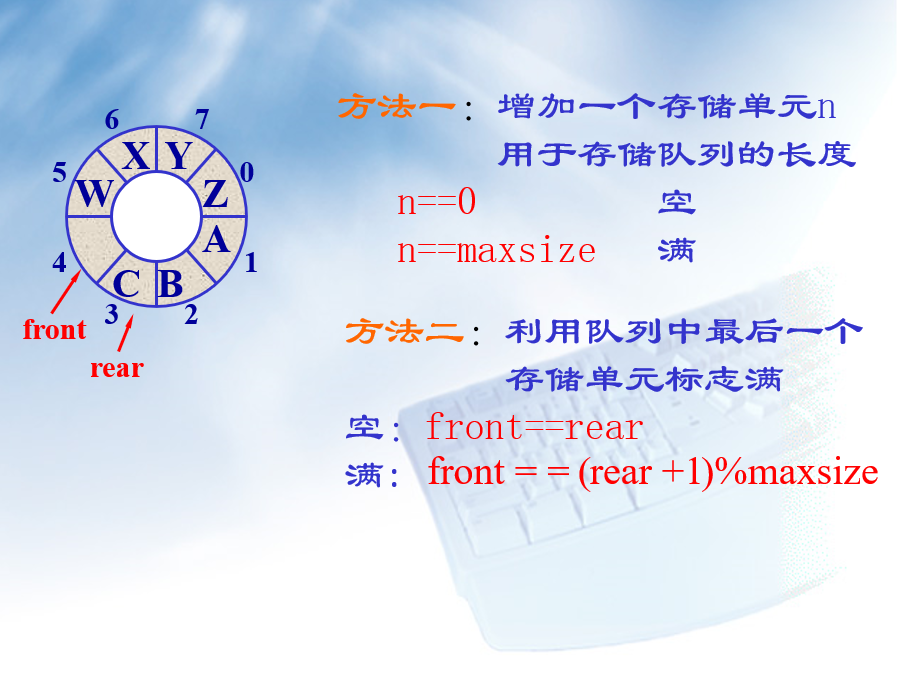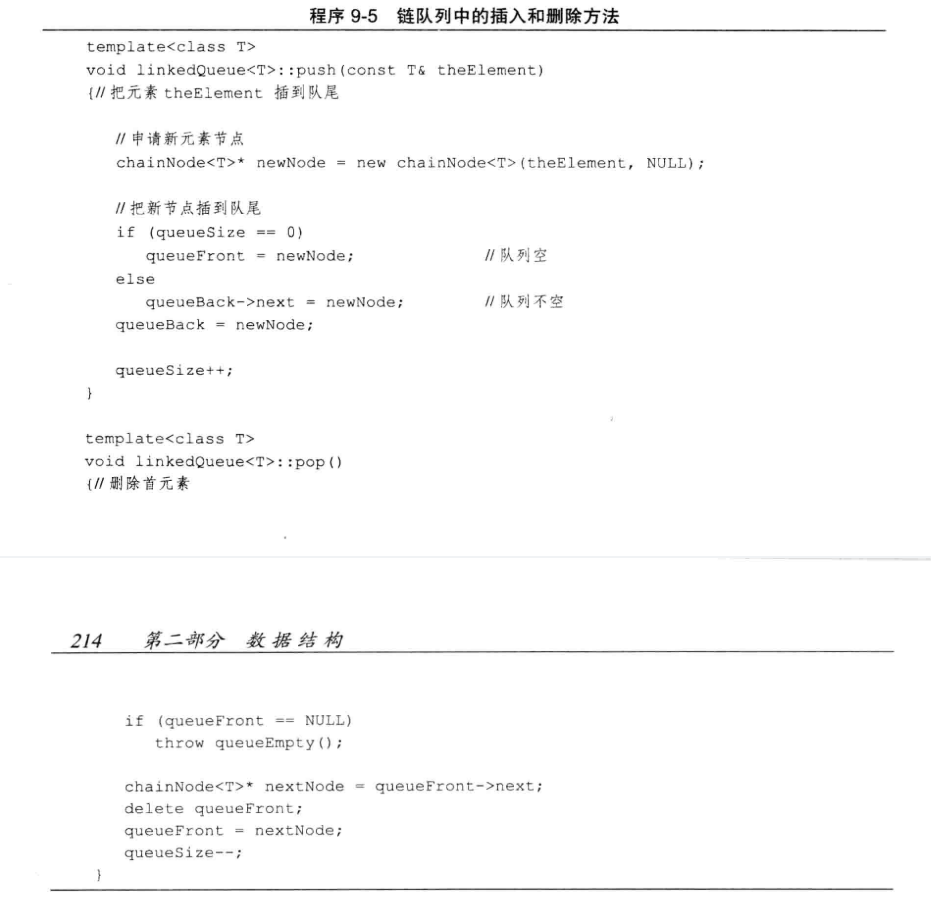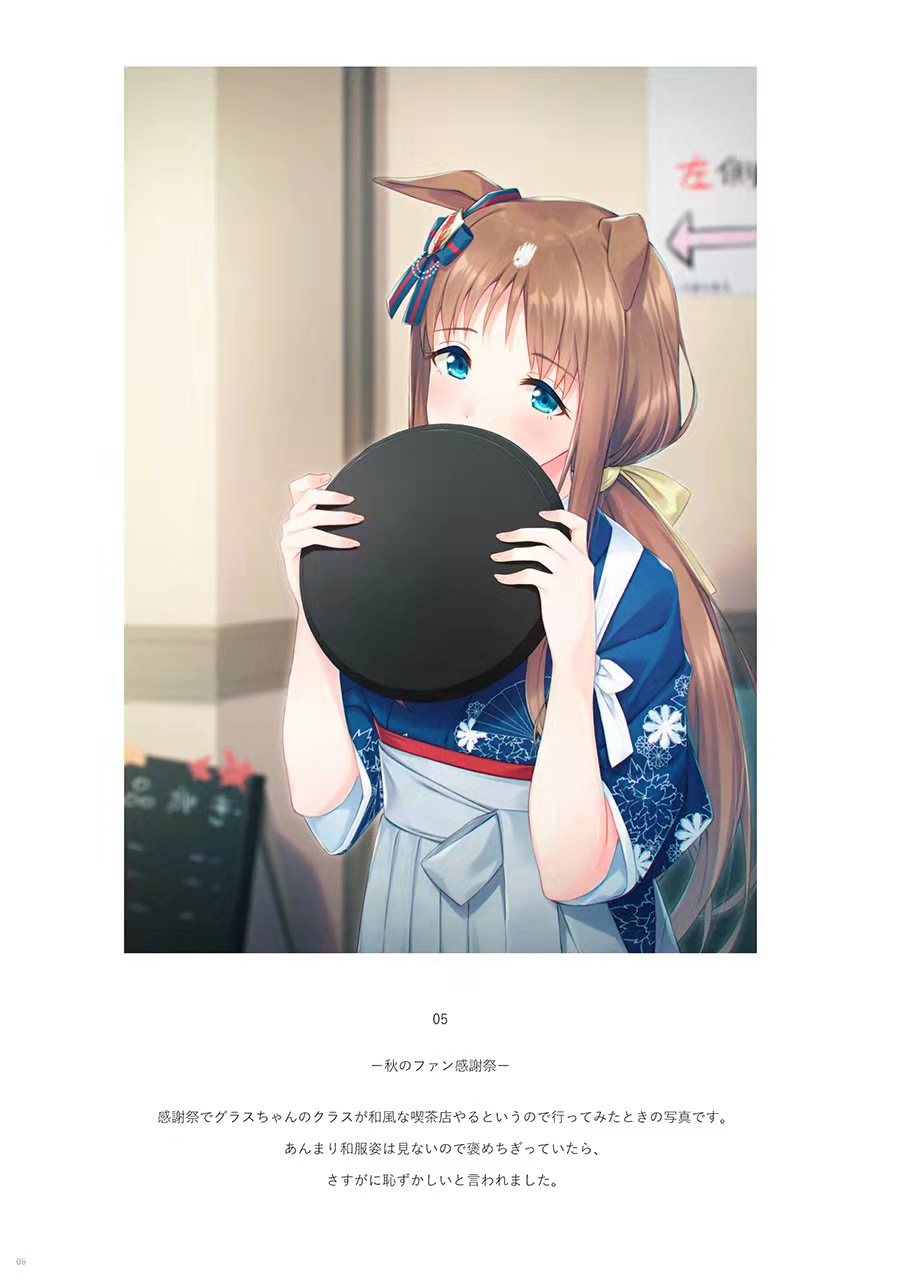队列
队列是一种特殊线性表,与栈相同。队列的插入和删除操作分别在两端进行,与栈不相同,因此队列是一个先进先出的线性表。
定义
队列是一个线性表,其插入和删除操作分别在表的不同端进行。插入元素的那一端称为队尾(back 或 rear),删除元素的那一端称为队首(front)。

记忆队列时,可以联想我们平时排队的情形。在排队的过程中遵守先来先到原则,也即是先进先出原则。
抽象数据类型(ADT)
在队列当中,常见的操作有如下:
| functions | runtimes | description |
|---|---|---|
| q.dequeue() | O(1) | removes front value and returns it;throws error if queue is empty |
| q.enqueue(value) | O(1) | places given value at back of queue |
| q.isEmpty() | O(1) | returns true of queue has no elements |
| q.peek() | O(1) | returns front value without removing;throws an error if queue is empty |
| q.size() | O(1) | return number of elements in queue |

数组实现
若要通过数组来实现队列,首先需要考虑将哪端作为队首,哪端作为队尾。
- 假如将 index = 0 作为队首,即 location(i) = i;
队列的第 i 个元素存储在 queue[i] 中,queueFront = 0,队列长度 = queueBack + 1,在队列空时,queueBack = -1。

当进行插入操作时,所需要的时间 Θ(1)(queueBack 加1,再把元素插入到 queue[queueBack]当中),当进行删除操作时,所需要的时间是 Θ(n),其中 n 为删除之后剩余元素的个数。
- 假如队首位置不固定时,即 location(i) = location(队首元素) + i
此时,删除操作所需要的时间将减少至 Θ(1)。

然而,当这样使用数组时,可能会出现许多未使用空间,且数组长度已经被扩大数倍。这个时候我们可以将数组视为一个环(将数组视为环是为了理解,其实是对下标进行设置),就可以利用这些空余空间,同时插入和删除的最坏时间复杂度都会变成 Θ(1) ,
这也被称为循环队列。
循环队列
对于循环队列,也有两种实现方式:

当然,无论以何种方式进行实现,队列元素的个数最多是 $arrayLength - 1$ 。
void Initqueue (SqQueue *&q)
{
q=(SqQueue *)malloc(sizeof(SqQueue));
q->rear = q->front = 0;
}
bool QueueEmpty (SqQueue *q )
{
if ( q->rear == q->front) return true;
else return false;
}
bool enQueue (SqQueue *&q, elemtype e )
{
if ( q->front= =(q->rear+1)% maxsize )
return false;
q->rear = ( q->rear+1) % maxsize;
q->data[q->rear] = e;
return true;
}
bool deQueue (SqQueue *q; elemtype &e )
{
if ( q->front==q->rear)
return false;
q->front = ( q->front+1) % maxsize;
e = q->data[q->front];
return true;
}
链表实现
同理,在使用链表对队列进行实现过程中,需要考虑头的位置。在链表中,则是考虑指针的方向。1. 指针由头指向尾,2. 指针由尾指向头。

对于这两种方式,插入操作均没有差别,而对于删除操作,第一种方式会更加方便,因此我们通常采用从头至尾的链接方向。
操作如下:(贴图就对了)

优先队列
优先队列是一种特殊的队列,在优先队列中,其中的元素被赋予了不同的权值大小,代表了各个元素的优先级。

可能会存在的操作如下:
| actions | description |
|---|---|
| pq.enqueue(value, pri) | adds value to queue,with the given priority number |
| pq.dequeue() | return the value in the queue with most urgent(minimum)priority;thros an error if empty |
| pq.peekPriority() | returns priority of most urgent priority element;throws error if queue is empty |
| pq.isEmpty() | return true if queue contains no elements(size 0) |
| pq.size() | returns the number of elements in the queue |
| out « pq | return / print a string such as “{3, 42, -7, 15}” |
| pq.changePriority(value, pri) | alters an existing element’s priority to be more urgent |
| pq.clear() | removes all elements of the queue |
| pq.peek() | returns most urgent priority element without removing it;throws error if queue is empty |
实际应用
(暂略。累了去休息了
